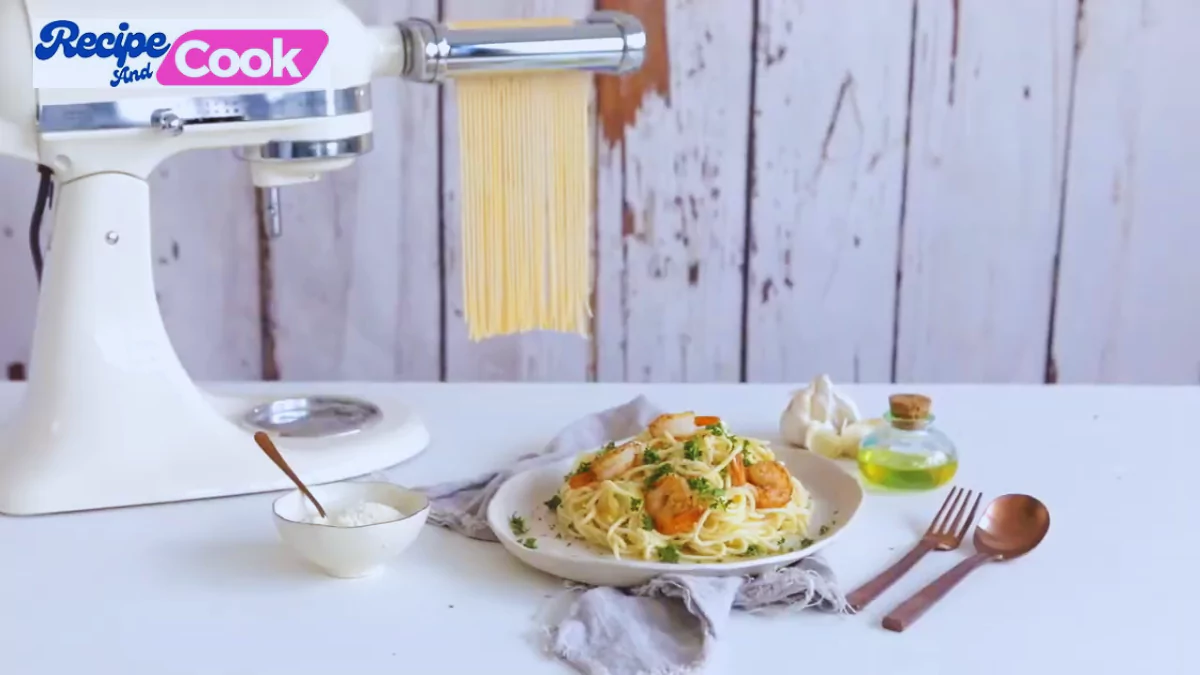Making fresh homemade pasta is so satisfying, but it can be labor intensive. That’s where the pasta attachment for the KitchenAid stand mixer comes in handy! With this attachment, you can easily roll and cut fresh pasta dough right in your mixer. The end result is tender homemade noodles that are far superior to store-bought.
In this easy KitchenAid Egg Noodles Recipe, we’ll walk through how to make classic egg noodles from scratch using the KitchenAid pasta attachment. Read on for step-by-step instructions and tips for homemade pasta success!
More KitchenAid Recipes:
kitchenAid Chocolate Ice Cream
How to Make KitchenAid Egg Noodles
Making homemade pasta with a KitchenAid is so easy thanks to the pasta roller and cutter attachments. You’ll never buy dried pasta again after you discover how simple it is to make your own. Let’s learn how to make this dish:
Prep Time: 30 Minutes | Cook Time: 5 Minutes | Servings: 4 | Calories: 150 Kcal
Ingredients Needed
- 275g All-Purpose Flour: All-purpose flour gives the noodles a nice chewy texture. Bread flour can also be used.
- 3 Large Eggs: Eggs add flavor, protein, and color to the noodles. The yolk gives them that classic egg noodle yellow hue.
- Water as needed: Add a tablespoon or two of water if the dough seems too dry. The amount needed varies based on the size and humidity of the eggs.
- Pinch of Salt: Just a small pinch of salt enhances the flavor.
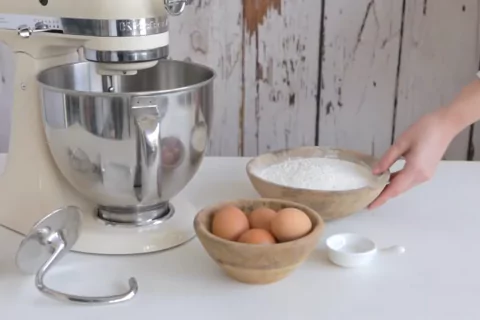
Equipment That You’ll Needed:
- KitchenAid Stand Mixer
- Pasta roller attachment
- Pasta cutter attachment
- Baking tray
- Plastic wrap
- Mixing bowl
Step-by-Step Instructions
Make the Dough:
1. In the bowl of your KitchenAid stand mixer, combine the flour and eggs.
2. Attach the dough hook and mix on low speed until the dough comes together into a ball.
3. Increase speed to medium (#2) and knead for 10 minutes. The dough will become smooth and elastic.
4. Remove dough ball from mixer and wrap in plastic. Let rest for 10 minutes.
Roll Out the Dough:
5. Attach the pasta roller to your stand mixer. Set the thickness dial to #1, the thinnest setting.
6. Cut the dough ball into 4 even pieces. Working with one piece at a time, flatten slightly then run it through the roller.
7. Fold the dough into thirds and run it through the roller again. Repeat this process about 5-6 times until dough is soft and pliable.
8. Change the dial from #1 to #2 and run the dough through again. Repeat with settings #3 and #4 until dough is desired thinness.
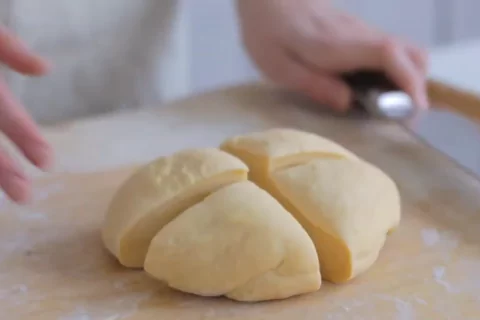
Cut the Noodles:
9. Swap the pasta roller for the cutter attachment. For classic egg noodles, use the fettuccine cutter.
10. Run the sheets of dough through the cutter. Loosely scatter noodles across a baking tray dusted with flour.
11. Repeat rolling and cutting process with remaining dough.
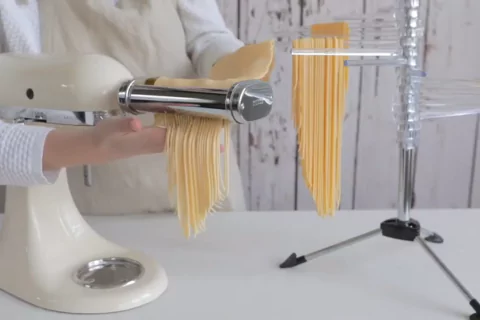
Cook the Noodles:
12. Bring a large pot of salted water to a boil. Add noodles and cook for 2-3 minutes until they float to the surface.
13. Drain immediately and toss with your favorite sauce. Enjoy your fresh homemade pasta!
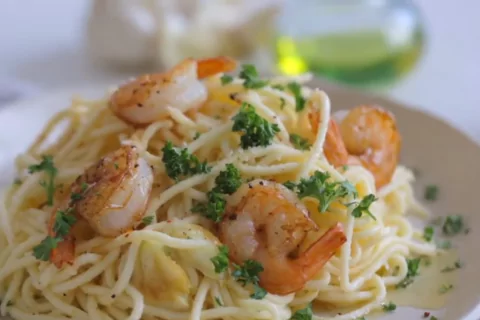
Tips for Making Great Homemade Pasta
- Use high protein bread or 00 flour for best results. All-purpose works too.
- Make sure your eggs are room temperature. This prevents the dough from cracking.
- Knead the dough well until it’s smooth and elastic. Don’t rush this step.
- Let the dough rest before rolling it out. This makes it easier to work with.
- Start with the thinnest pasta roller setting and work your way up. This ensures even thickness.
- Work quickly when cutting the noodles to prevent drying out. Or cover with towel.
- Add noodles gently to boiling water so they don’t stick together. Give them room to move.
- Check pasta 1 minute after it floats to the top. It goes from perfect to overdone quickly.
- Toss immediately with sauce to prevent sticking. Enjoy right away for best texture.
Recipe Variations
There are endless ways to vary homemade egg noodles:
Flavors – Add spices, herbs, spinach, tomato, etc to dough or flour
Whole wheat – Substitute part of the flour for whole wheat
Additional ingredients – Stir in Parmesan, black pepper, lemon zest, etc
Colored noodles – Use tomato paste, spinach puree, carrot puree, etc
Stuffed noodles – Roll flat sheets around filling before cutting
Alternative shapes – Try spaghetti, rigatoni, ravioli, lasagne sheets etc
Freezing – Allow cooked noodles to cool completely before freezing in an airtight bag
Serving Suggestions
Fresh egg noodles pair beautifully with all different sauces:
Cream or cheese sauces – alfredo, carbonara, etc
Hearty meat sauces – bolognese, ragu, etc
Olive oil or herb sauces – cacio e pepe, pesto, etc
Seafood sauces – shrimp scampi, lobster cream, etc
Roasted vegetable sauces – pumpkin, cauliflower, etc
Bold flavors – sesame chili oil, lemon chicken, etc
For a simple weeknight meal, toss noodles with olive oil, garlic, Italian seasoning and Parmesan. For special occasions, make lasagna or baked ziti with layers of sauce and noodles.
You can also use fresh noodles in chicken noodle soup or beef stroganoff for comfort food perfection. However you sauce them, homemade egg noodles will elevate any dish!
Storing Leftover Noodles
For best flavor and texture, fresh pasta is really best eaten right after cooking. But leftovers can be stored for 2-3 days in the refrigerator.
Here are some tips for storing leftover homemade noodles:
- Portion noodles into freezer bags or airtight containers. Remove as much air as possible.
- Do not freeze noodles with sauce, as it can compromise texture. Freeze sauce separately.
- For fridge storage, toss noodles with a bit of oil to prevent sticking.
- Reheat refrigerated noodles gently in simmering water or sauce to restore texture.
- Cooked noodles also freeze well for 1-2 months. Thaw in fridge before reheating.
With proper storage, you can still enjoy the delicious homemade taste of fresh pasta even with leftovers!
Frequently Asked Questions About KitchenAid Egg Noodles Recipe
What can I use instead of a pasta machine?
You can roll out dough with a rolling pin but it takes more work. A food processor or hand crank machine make the job easier.
Can I hand cut the noodles?
Yes, you can cut pasta dough into noodles by hand but it will not be as quick or uniform as using a pasta cutter attachment.
My dough is too sticky/dry. How can I fix it?
Sticky dough needs a bit more flour worked in. If too dry, add water a teaspoon at a time until it comes together.
Do I need “00” flour?
No, all-purpose flour works fine for homemade pasta. But 00 or bread flour will provide more structure.
How long does homemade pasta last?
Fresh pasta is best cooked right away but can be refrigerated 1-2 days for best quality. It can be frozen for 1-2 months.
What thickness should I roll the dough?
Start with the thinnest setting (#1) and work up to #4-5 for most pasta shapes. Lasagna sheets can be a bit thicker.
Can I use a pasta maker without a stand mixer?
Yes, many pasta rollers and cutters are manual machines that attach to your counter or tabletop to operate separately.
How long do I boil the noodles?
Fresh pasta cooks very quickly, usually just 1-3 minutes until it floats. Overcooking will make it mushy.
Conclusion
The pasta attachment for the KitchenAid stand mixer makes homemade noodles fast and simple. With just a few ingredients and a little kneading, you can have fresh pasta ready to cook and sauce in no time.
Making your own noodles allows you to customize shapes and flavors for restaurant-quality pasta at home. While it takes some practice, the process is very rewarding. The texture of fresh egg pasta is truly unbeatable.
This versatile KitchenAid Egg Noodles Recipe is perfect for everything from rich baked pasta dishes to quick weeknight meals. Just toss the noodles with your favorite sauces.
The KitchenAid pasta rollers handle all the work of getting the dough thin and even, while the cutters create flawless noodles. Be sure to cook the pasta briefly to al dente perfection.
Now that you know how to master homemade pasta with your stand mixer, you’ll never settle for dried noodles again!
Additionally, You can also like and, follow us on Pinterest, and Reddit for more updates. Your thoughts and engagement are greatly appreciated!

